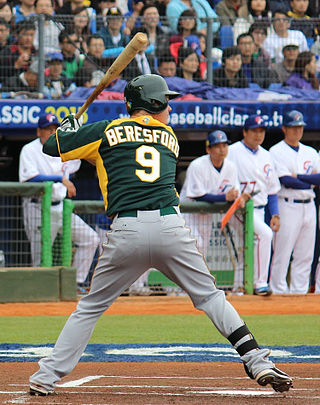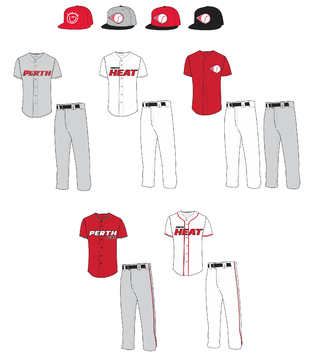
The Melbourne Cricket Ground (MCG), also known locally as The 'G, is an Australian sports stadium located in Yarra Park, Melbourne, Victoria. Founded and managed by the Melbourne Cricket Club, it is the largest stadium in the Southern Hemisphere, the 11th largest globally, and the second-largest cricket ground by capacity, after the Narendra Modi Stadium. The MCG is within walking distance of the city centre and is served by Richmond and Jolimont railway stations, as well as the route 70, route 75, and route 48 trams. It is adjacent to Melbourne Park and is part of the Melbourne Sports and Entertainment Precinct.

Stadium Australia is a multi-purpose stadium located in the Sydney Olympic Park suburb of Sydney, New South Wales, Australia. The stadium, which in Australia is sometimes referred to as Sydney Olympic Stadium, Homebush Stadium or simply the Olympic Stadium, was completed in March 1999 at a cost of A$690 million to host the 2000 Summer Olympics. The Stadium was leased by a private company, the Stadium Australia Group, until the Stadium was sold back to the NSW Government on 1 June 2016 after NSW Premier Michael Baird announced the Stadium was to be redeveloped as a world-class rectangular stadium. The Stadium is owned by Venues NSW on behalf of the NSW Government.

The Brisbane Cricket Ground, commonly known as the Gabba, is a major sports stadium in Brisbane, the capital of Queensland, Australia. The nickname Gabba derives from the suburb of Woolloongabba, in which it is located. Over the years, the Gabba has hosted athletics, Australian rules football, baseball, concerts, cricket, cycling, rugby league, rugby union, Association football and pony and greyhound racing. At present, it serves as the home ground for the Queensland Bulls in domestic cricket, the Brisbane Heat of the Big Bash League and Women's Big Bash League, and the Brisbane Lions of the Australian Football League. It is also the secondary home of the Brisbane Broncos of the National Rugby League. The stadium will serve as the Olympic Stadium during the 2032 Summer Olympics and Paralympics, and for those events the stadium will be rebuilt.

David Wayne Nilsson is an Australian retired professional baseball catcher and current manager of the Australia national baseball team and the Brisbane Bandits. He played for Major League Baseball's Milwaukee Brewers from 1992 to 1999 and was an All-Star in 1999, becoming the first Australian player to appear in an All-Star game. He ended his Major League career on 3 October 1999 with 837 games played, 789 hits, 105 home runs and a .284 career batting average.

In Australia, baseball is a game that is played in all states and territories of the country.
The Australian Baseball League (ABL) was a baseball league, established in 1987 and disbanded in 1999.

The Perth Heat is a baseball team in the current Australian Baseball League and a founding member of the Australian Baseball League. It is the most successful team in ABL history, winning 15 Claxton Shields.

Olympic Park Stadium was a multi-purpose outdoor stadium located on Olympic Boulevard in inner Melbourne, Australia. The stadium was built as an athletics training venue for the 1956 Olympics, a short distance from the Melbourne Cricket Ground, which served as the Olympic Stadium. Over the years it was the home of rugby league side, Melbourne Storm and the A-League team, Melbourne Victory; throughout its life the stadium played host to athletics. Olympic Park Stadium was located in Olympic Park, which is part of the Melbourne Sports and Entertainment Precinct.
The Claxton Shield was the name of the premier baseball competition in Australia held between state-based teams, as well as the name of the trophy awarded to the champion team. From the summer of 1989–90 until 2001–02, and again since 2010–11, the tournament was replaced by one of three other competitions: the original Australian Baseball League (ABL), the International Baseball League of Australia (IBLA), and since the 2010–11 season the new ABL. Despite other competitions being held in place of the Claxton Shield, the physical trophy has remained the award for the winning teams. Though city-based teams have competed for the Claxton Shield in some seasons, the name engraved on the shield is that of the winning state; for the 2010–11 ABL season won by the Perth Heat, "West Australia 2011" was engraved.

The 2009 Diamond Anniversary Claxton Shield was the 75-year anniversary of the Claxton Shield and was held from 2 December 2008 to 8 February 2009 and was the Shield's Diamond anniversary. The Perth Heat won the tournament after defeating the New South Wales Patriots 3–2 in the third game of a best of three series.
The 1936 Claxton Shield was the third annual Claxton Shield, an Australian national baseball tournament. It was held at Marrickville Oval in Sydney from 3 to 10 August, and was won by South Australia for the third time in a row. The other participating teams were Victoria and hosts New South Wales.
The 1937 Claxton Shield was the fourth annual Claxton Shield, an Australian national baseball tournament. It was held at Unley Oval in Adelaide from 7 to 14 August, the second time Adelaide had hosted the Shield. New South Wales won the Shield for the first time. Western Australia joined the tournament for the first time, becoming the fourth state to be represented. The other participating teams were Victoria and hosts South Australia.
The 1946 Claxton Shield was the seventh annual Claxton Shield, an Australian national baseball tournament—the first time the tournament was held after a seven-year break due to World War II. It was held at Petersham Oval and Marrickville Oval in Sydney from 3 to 10 August, and was won by the hosts New South Wales for the fourth time in a row. With this tournament win, they overtook South Australia as the outright leading state in Claxton Shield tournament wins.

The Australian Baseball League (ABL) is a professional baseball league in Australia. The league is governed by the Australian Baseball Federation (ABF). It uses the same name as a now-defunct competition held during the 1990s, and though it shares some history of the original league with the Claxton Shield awarded to winners of both competitions, it is considered to be a separate competition.
The 1950 Claxton Shield was the 11th annual Claxton Shield; it was held in Sydney, New South Wales. The participants were South Australia, New South Wales, Victoria, Western Australia and Queensland. The series was won by New South Wales, their fifth Shield title.

The 2010 Claxton Shield was the 76th Claxton Shield tournament, the premier baseball competition in Australia, and was held from 6 November 2009 to 7 February 2010. It was hailed as the precursor to the new Australian Baseball League that would start in the place of the Claxton Shield in late 2010 to early 2011. The Victoria Aces defeated South Australia two games to nil in the championship series to win the tournament; this was the 22nd time the Claxton Shield had been awarded to a Victorian team. The competition was sponsored by Domino's Pizza.
The 1956 Claxton Shield was the 17th annual Claxton Shield, it was held in Adelaide, South Australia. The participants were South Australia, New South Wales, Victoria and Western Australia. The series was won by Victoria in due to a controversial decision in the final game. They claimed their fifth Shield title. The 1956 Olympic Baseball team was selected from the tournament.

The Sydney Blue Sox are a professional baseball team, and one of eight foundation teams in the re-formed Australian Baseball League (ABL). The team plays their home games at Blacktown International Sportspark (BISP), one of the two venues used for baseball at the 2000 Sydney Olympics, when it was known as Blacktown Olympic Park. The Blue Sox hosted the league's Opening Day for the inaugural season on 6 November 2010, when they played against the Canberra Cavalry, and won the game 1–0. The Blue Sox are the only team in the Australian Baseball League to implement sabermetrics as a way to run their team with volunteer statistician, Anthony Rescan.
The 2010–11 Australian Baseball League season was the inaugural Australian Baseball League (ABL) season, and was held from 6 November 2010 to 13 February 2011. It came 12 years after the old Australian Baseball League ceased and is the successor of the mostly amateur Claxton Shield competition that has been played since 1934. The season consisted of six teams competing in a 40-game schedule, followed by a three-round finals series to determine the ABL champion.











